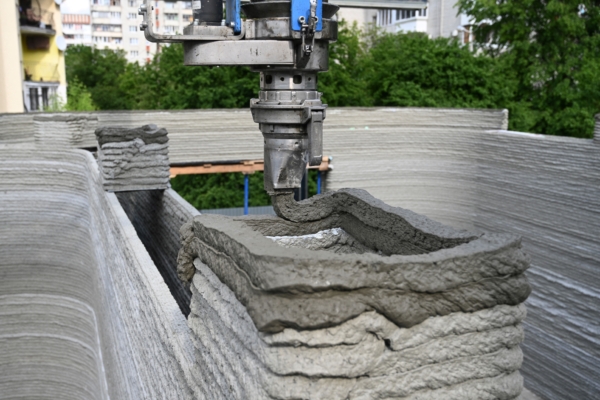Severe natural disasters such as earthquakes and hurricanes can cause buildings to collapse, primarily due to insufficient damage resistance of the building cement. Recently, the United States has developed a biomimetic cement that is five times more resistant to damage than regular cement.
Inspired by the structure of human cortical bone, researchers in the Civil and Environmental Engineering Department at Princeton University in the United States have developed a biomimetic cement material that is less prone to cracking or sudden failure compared to traditional cement, with a damage resistance 5.6 times that of standard cement materials.
Cortical bone, also known as compact bone, is one of the two types of bone tissues that make up the skeletal system. Cortical bone provides several key functions for the skeleton, such as supporting the body, protecting organs, and releasing chemical components primarily composed of calcium. Cortical bone forms the outer layer of most bones and is denser and harder than cancellous bone. Approximately 80% of the weight of the human skeleton is cortical bone.
Cortical bone has a dense outer shell that provides strength to resist fractures. It consists of dense tubular bones with multiple tubular pores internally and a network of interconnected channels below.
Researchers found that although cortical bone has weak points that allow cracks to expand rapidly, it can exhibit excellent fracture toughness through internal and external mechanisms (numerous network channels) and can prevent further crack propagation in bones (delayed crack extension).
Based on this structural principle, they utilized a combination of 3D printing and casting methods to produce a biomimetic cement resembling cortical bone.
They added cylindrical and elliptical tubes (porosity of 40%) to the cement slurry to interact with expanding cracks and then conducted pressure and tensile tests. The results showed that the fracture toughness of the cement with elliptical and circular voids was 3.1 times and 5.6 times higher than regular cement, surpassing the performance of adding fibers, mortar, and toughening agents in cement.
Furthermore, researchers have developed a quantification method for disorder in building materials to understand the primary reasons affecting stress, brittleness, and ductility characteristics. This method aims at developing more and better novel materials to enhance building performance and address the issue of insufficient fracture toughness in traditional materials.
Associate Professor of Civil and Environmental Engineering at Princeton University, Reza Moini, stated to the university’s newsroom, “People expected that the crack resistance of materials would decrease when using hollow tubes. However, we found that by utilizing the geometric shape, size, orientation, and direction of the tubes, we can promote interaction between cracks and tubes, enhancing one characteristic without sacrificing another.”
Moini further explained, “Through fracture mechanics and statistical mechanics principles, we aim to enhance the fundamental properties of materials and quantify irregular materials or disturbances through statistics, making originally disordered materials customizable. This customization helps us design materials more conveniently and apply them in the construction of civil infrastructure.”
The research findings were published in the journal “Advanced Materials” on September 10th.

